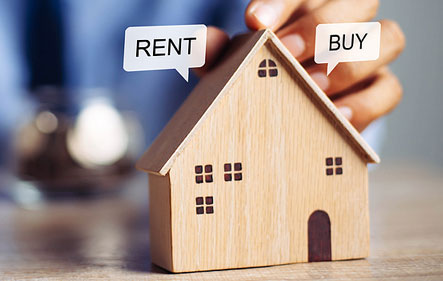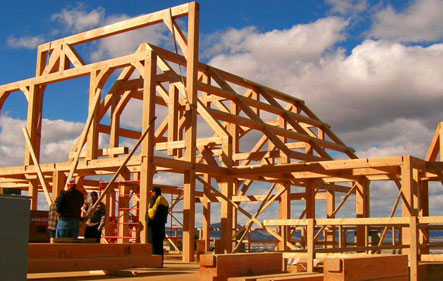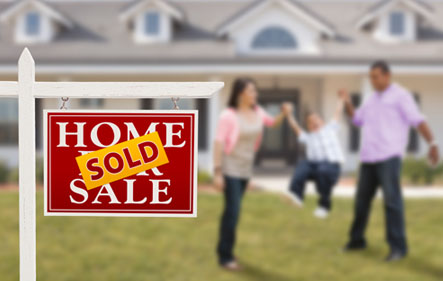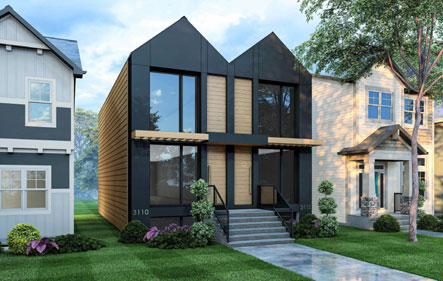Are you one of the millions of Americans trying to buy a home at this time? If you are, you already know that we’re in a housing crisis, and that crisis has impacted nearly every segment from the wealthy to the homeless.
Recently, the demand for housing increased dramatically due to the confluence of some major factors: population growth, a strong economy, and a pandemic that dramatically changed how people live and work. Added to all that were historically low interest rates that had everyone from first-time buyers to real estate conglomerates scooping up properties. But the good times didn’t last too long.

Seemingly overnight the prices of homes, both existing and new, began to skyrocket. Housing prices have climbed more than 30-percent since 2020. Adding fuel to the fire was low inventory. The supply of homes — new and existing ones — hasn’t been keeping up with demand, resulting in a significant housing shortage. Part of the reason for the shortage was a lack of new construction.
According to the National Association of Realtors (NAR) the US is currently experiencing a shortage of between 5.5 to 6.8 million housing units with the gap between supply and demand widening every year. Another key factor has been the rising cost of construction materials including lumber, steel and concrete. When COVID hit, the pandemic disrupted global supply chains causing shortages of raw materials and delays in construction projects.
As a result, the supply of affordable housing in the US shrinking rapidly. In fact, the total US housing inventory dropped to its lowest level on record in January 2023 – only about 860,000 for-sale properties on the market, according to NAR. And fewer affordable homes for sale means the homes left on the market are more expensive … MUCH more expensive. Right now the average loan for a mortgage has hit a record-high of $451,000, according to the Mortgage Bankers Association (MBA).
Lower inventory and higher prices have shut out many people looking to buy a home for the first time. In fact, according to the National Association of Realtors the number of entry-level buyers dropped to 27% in January — down from 33% the previous year.
So if you’re one of the many who can’t afford a home right now, the obvious solution is to rent, right? Well, not so fast …

THE RENTAL OPTION
The lack of affordable housing doesn’t just affect the price of new homes, it impacts rental properties as well. Higher mortgages and rising rental rates have resulted in squeezing out people who can’t afford the higher cost of either owning or leasing. Rising rents have hit lower income renters especially hard. According to the National Low Income Housing Coalition there’s a shortage of 7.2 million affordable and available rental homes for extremely low-income renters, defined as households that earn less than 30% of their area’s median income. And that is actually leading to an increase in homelessness, particularly in urban communities and with minority populations.
AFFORDING THE UNAFFORDABLE
Addressing the nation’s current housing crisis might seem like a job for the government, particularly since recent interest rate hikes from the Federal Reserve has contributed to astronomically high mortgage rates that are placing homes further out of the reach of prospective buyers. Again, the solution is not as simple as it may sound.

Government-backed FHA and VA loans have traditionally provided a way for homebuyers with limited means to get into the housing market. But these lending options from the Federal Housing Administration and the Department of Veterans Affairs have limitations that are proving to be problematic. FHA and VA loans have strict requirements that impose limits on price and appraisals. They can’t be issued on a home being purchased for more than its appraised value, which is often the case in the current market. Not surprisingly, the number of government-backed loan applications dropped 8.8% for the week ending March 4 compared to the same time last year, according to the Mortgage Bankers Association (MBA). Applications for mortgages overall have been declining as interest rates increased this year, but conventional loans fell less, by 7% during the same period.
Black homebuyers have been hit the hardest by the latest housing price surge and supply drought. As the second largest group to utilize FHA loans, Black and African American homebuyers borrowed a total of $82 billion in FHA financing in 2020, according to the latest Home Mortgage Disclosure Act (HMDA) data. But in the current crisis, homeownership for black families is declining.
The Black homeownership rate dropped to just 43.4% in 2020. That’s even lower than the rate a decade ago when the homeownership rate in 2010 was down to 44.2%, according to a recent NAR report. In contrast, white homeownership reached 72.1% in 2020. Surprisingly, Asian American (61.7%) and Hispanic (51.1%) homeownership reached decade-long highs of homeownership in 2020.
“As the gap in homeownership rates for Black and white Americans has widened, it is important to understand the unique challenges that minority home buyers face,” said Jessica Lautz, NAR vice president of demographics and behavioral insights, in the release. “Housing affordability and low inventory has made it even more challenging for all buyers to enter into homeownership, but even more so for Black Americans.”

BUILD BABY BUILD!
While the obvious solution to the current housing crisis is to build more homes at more affordable prices, the question remains … HOW? The price of land and construction and labor costs aren’t going down. Added to the mix are increasingly stringent building requirements to address environmental concerns — a “must” when the world is facing a climate crisis of unprecedented proportions
The good news is there are building solutions on the horizon that have the potential to reduce new home construction costs:
Converting Unused Spaces – during the pandemic, working from home became the new normal, and for many that reality still remains today. With fewer workers commuting into city centers, there’s been a significant increase in unused office space. In fact, office vacancy in the city of Manhattan was up 15% in May according to CBRE, a real estate investment firm. To counter this problem, the latest trend is to convert office buildings into residential rentals. While these conversions aren’t without some challenges – zoning laws, affordable housing requirements, even building structure – they are actually better for the environment than new builds according to the World Green Building Council.
3D Printed Homes – the 3D printing movement has found its way to the housing market. So how does it work? A large, computer-controlled 3D printer dispenses a cement-like mixture to form the footings, foundation, even the walls of a house. With the ability to build housing more quickly with less labor and less waste, 3D houses can be less expensive than traditional “stick build” homes. They are also believed to be more resilient and more energy-efficient.
Home-building Robots – along the lines of 3D printing for homebuilding is the impact of robotics in automating construction. With fewer workers entering the industry, robotics is automating such tasks as bricklaying, tying rebar and even putting up drywall. The result is time and labor-intensive tasks being done faster and more efficiently, resulting in cost savings.
Prefab Homebuilding – prefab homes are built in factories and delivered to a home site. These modular structures are precision-built, can be constructed in a shorter timeframe and are designed to be more energy-efficient than the typical stick build home. Prefab home construction also utilizes sustainable building materials.
Of course these cost-reduction solutions come with the caveat of using sustainable building materials to further reduce costs while building with the environment in mind.
But what’s the solution in a state like California? With a shortage of 1.4 million homes the state is facing an unprecedented challenge to provide affordable housing. In my home city of Los Angeles, where land is at a premium, the only solution appears to be going vertical. But in a place where a sprawling single-family home with breathtaking natural views is the dream, who wants a 20-story apartment building in their back yard – literally? Privacy, traffic and safety concerns are making popular locales like the seaside city of Santa Monica nervous. Where developers are seeing great opportunities, residents are fearing the end of the California dream. Can the allure of California living be preserved while meeting the state’s crushing housing demands?
BUYING A HOME IN A TIGHT MARKET
So how do you avoid living in your car (or on the streets) in an unforgivingly tight housing market?

Whether you’re a first-time homebuyer or looking to upgrade to your forever home, these are some essential tips to get you into your abode …
1 | Know What You Have to Spend
Don’t become house-poor trying to nab the home of your dreams. Find out from your lender what you can realistically afford for a mortgage, and STICK TO THAT NUMBER. That may mean buying a fixer upper for a little less and doing the needed upgrades yourself (and hiring vendors for the complicated tasks) even over time, but don’t put yourself in a situation where you can’t afford a dinner out, a weekend getaway, or visiting relatives for important holidays.
But what are your options if you’re dependent on a government-backed loan? “Homes are selling for above the appraised value, which makes it impossible for FHA loans to go through,” Goodman says. “There has to be a way to make these loans more flexible without incurring more risk.”
You can still get a home with an FHA loan – it may just take a bit more work. One option to consider is to research lenders with good reputations in the community, as an FHA preapproval from a reputable lender can go further than a preapproval from a lender the seller isn’t familiar with.
Also, remember that an FHA loan doesn’t make you a bad risk. In fact, many FHA borrowers have strong credit scores and can make higher down payments. This is information your lender should share (with your consent) to improve your prospects. “With the buyer’s permission, a lender can reveal financial information such as credit score and work history,” says Kristy Miley, founder of Red Bird Realty Group at Coldwell Banker Shook in West Lafayette, Indiana. “Have the lender directly contact the seller about your creditworthiness. Do what you can to stand out from the pack.”
2 | Be Flexible About Location
Your dream may be to live in Beverly Hills but your budget may only allow you to afford Torrance. Decide which key elements of your most desired location are important to you, and if necessary look for them in other, less expensive areas. If distance to work is a key factor, maybe a convenient commute via public transportation could be an acceptable tradeoff. If close proximity to conveniences like the grocery store, a fitness center or decent restaurants is a necessity, seek an area that offers those conveniences with nearby homes at a price point within your budget.
3 | Prep For a Marathon
A tight housing market means you will likely lose out on your first choice, and your second choice, and your third, and … you get the idea. Finding a home in this market means you should be prepared to hear a lot of “No”s before you finally get to a “Yes”.
4 | Consider Alternatives
If you can’t get that first single-family home, consider a condo or townhome. Even an ADU on the property of an acquaintance, friend or family member may be an option. Remember, the idea is to NOT wind up continuing to pay rent or, worse yet, to be living in your car, no matter HOW nice it is.
5 | Build It Yourself
This option is not for the faint of heart or the instant-gratification seeker. From securing a suitable site for the build to determining a realistic home design to getting the required permits and connecting to city utilities, the build-your-own-home option is long, difficult, and can present substantial challenges. But if you have the determination, the dollars, you’ve done the research and you’ve secured a good architect and contractor, go for it!

AFFORDABLE HOUSING IS A GOOD FOR THE ENVIRONMENT
The impact of the housing shortage goes far beyond the real estate market. The truth is, it affects us all.
Housing instability can lead to poor health outcomes including increased rates of mental and chronic physical illnesses, as well as higher crime rates. The housing shortage is particularly difficult for low income and minority households. Black and Spanish households are more likely to experience housing insecurity than white households, with blacks experiencing the highest rates of homelessness.
The need for housing solutions that also address affordable homes for low-income residents and the homeless is imperative if we expect to solve this crisis. Until we do, cities both large and small will continue to experience strained financial and caregiving resources. And the dream of well-managed, sustainable cities will remain just that … a dream.
END



